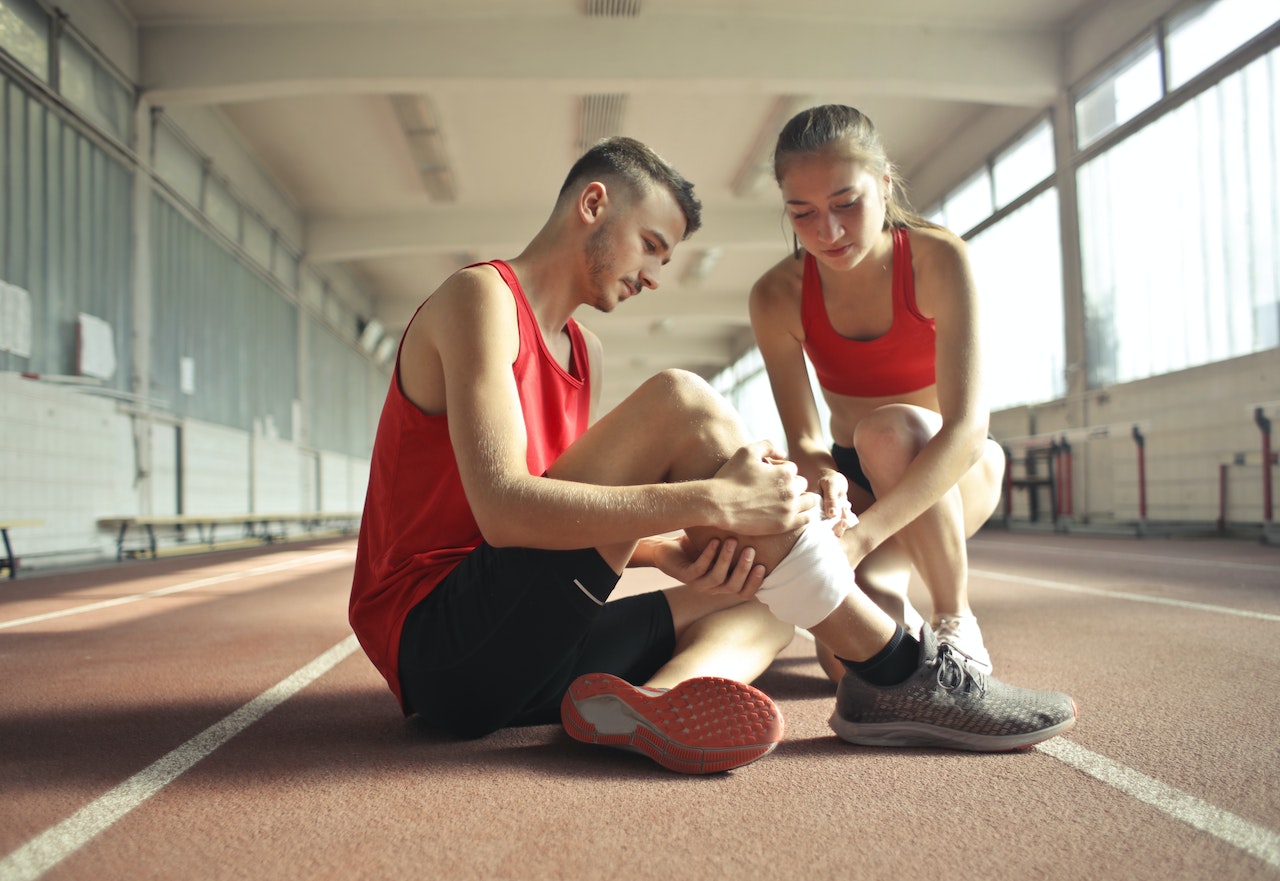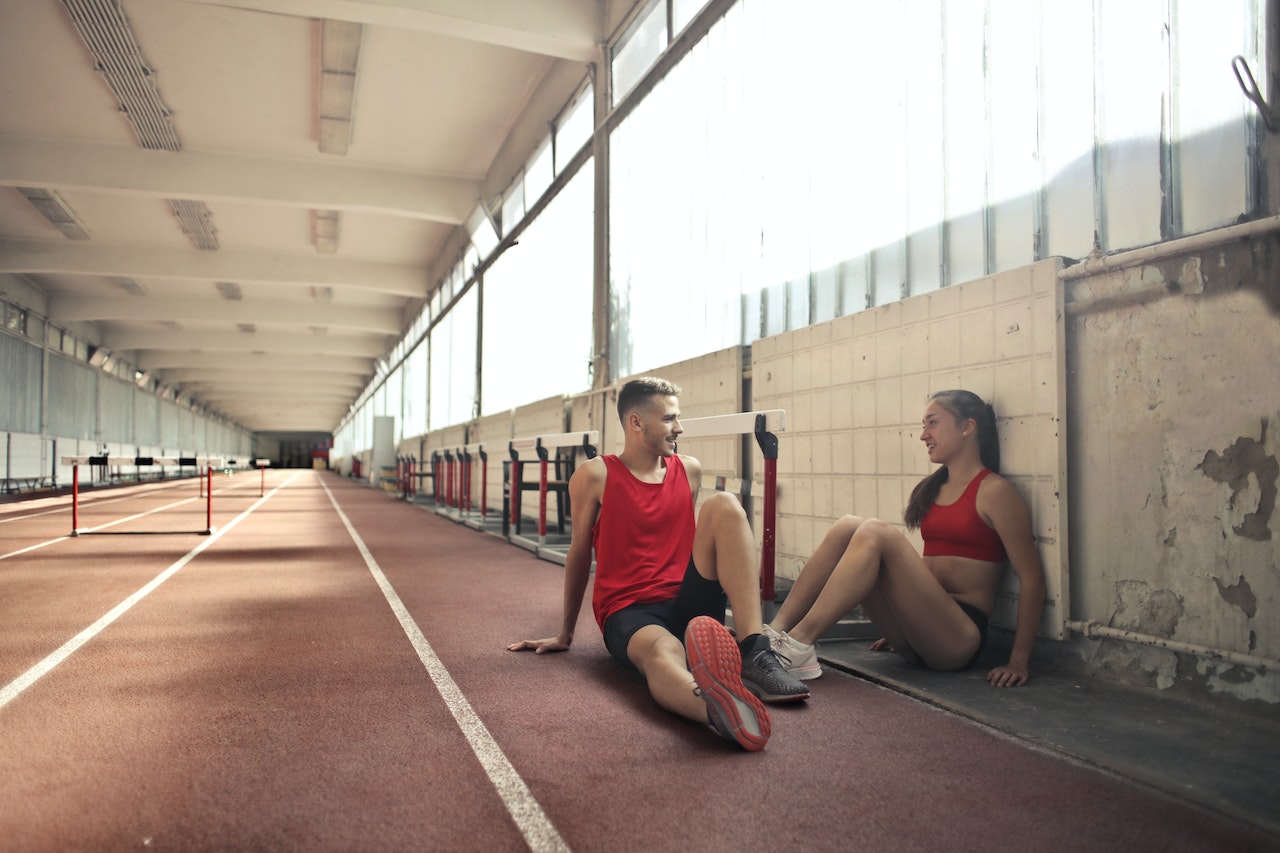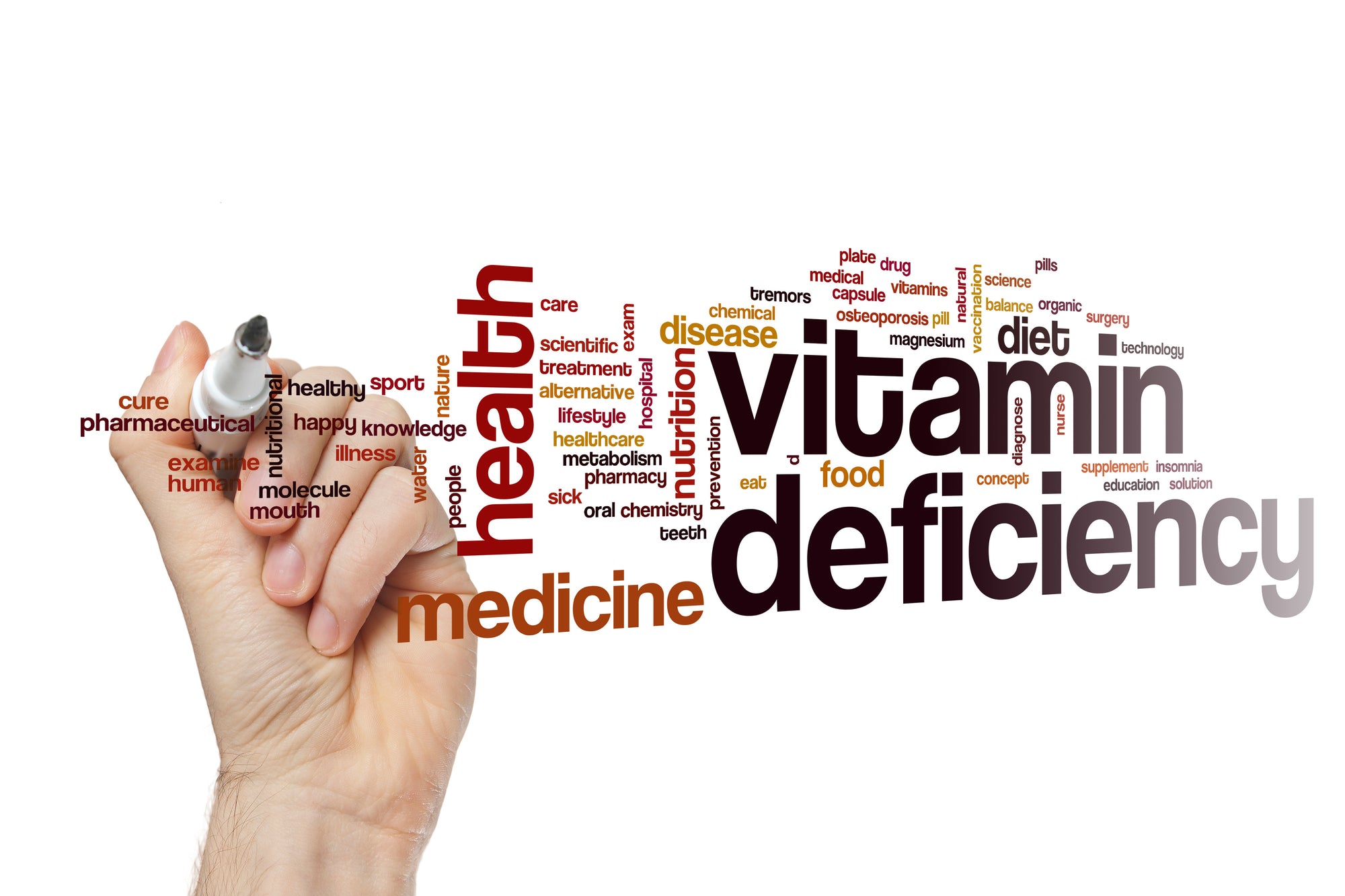With so many of us squeezing exercise into our busy schedule, finding healthy ways on how to help your sore leg muscles heal quicker is more critical than ever before.
Sore legs can be a nuisance, especially when trying to stay active and fit. This painful condition can be caused by various factors ranging from overuse to muscle fatigue or even an injury.
Fortunately, there are a few simple steps to help sore legs recover faster and get back on the road to fitness.
This article will discuss the best ways to do just that and get your leg muscles feeling better in no time.
Common Ways to Fix Sore Leg Muscles
If you're dealing with sore legs, there are a few simple steps you can do to help alleviate the pain and discomfort. Some of them include the following:
1. Massage sore leg muscles with a foam roller or massage ball
Massaging sore leg muscles with a foam roller or massage ball can be an effective way to ease the discomfort.
Foam rollers are cylindrical pieces of foam that you can roll your legs over to provide deep tissue massage, while massage balls are small, round balls that you can use to target specific areas of your legs for relief.
To use a foam roller, roll your legs over it in a back-and-forth motion. This way, you can target the muscles in your legs and help them relax. Place a massage ball on the sore area and apply pressure with your body weight. This will help to loosen up tight muscles and reduce pain.
2. Use ice and heat therapy to reduce inflammation and pain
Ice and heat therapy are two of the most common treatments for sore legs. Ice can be used to reduce inflammation and pain, while heat can help to relax tight muscles.
To use ice therapy, wrap an ice pack or a bag of frozen vegetables in a towel and apply it to the affected area for 15-20 minutes at a time. You can also have ice baths to reduce swelling and numb the area.
To use heat therapy, wrap a hot water bottle or heating pad in a towel and apply it to the affected area for 15-20 minutes. This will help to relax tight muscles and reduce pain. Warm baths can also be used to help relax the muscles.
3. Stretch sore leg muscles to improve flexibility and circulation
Stretching sore leg muscles is an integral part of the recovery process.
Stretching helps to improve flexibility and circulation, which can help to reduce pain and discomfort. When stretching your legs, it's essential to focus on the major muscle groups, such as the hamstrings, quadriceps, calves, and glutes.
Start by standing up straight with your feet shoulder-width apart. Then, slowly bend your knees and lower your body until you feel a stretch in the targeted muscle group.
Hold this position for 30 seconds before releasing and repeating on the other side.
4. Wear compression socks or sleeves to support sore muscles
Wearing compression socks or sleeves can be a great way to support sore leg muscles. Compression garments are designed to provide extra support and stability to the muscles and joints, which can help reduce pain and discomfort.
Compression socks or sleeves should fit snugly but not too tight, as this can restrict circulation. When putting them on, make sure that they are pulled up to the knee or mid-calf, depending on the type of garment.
By following these simple steps, you can help to reduce pain and discomfort in your sore legs. Always consult your healthcare provider before starting any new treatment plan.
5. Use a massage gun to promote faster recovery
Using a massage gun is another effective way to help promote faster recovery from sore legs.
Massage guns are handheld devices that use vibration and percussion to target specific areas of the body. This can help to reduce pain, improve circulation, and relax tight muscles.
When using a massage gun, it's essential to start with a low setting and gradually increase the intensity as your body adjusts.
6. Take an over-the-counter pain reliever or use natural remedies
Taking an over-the-counter pain reliever can be a great way to help reduce soreness and help your leg muscles recover faster. Nonsteroidal anti-inflammatory drugs (NSAIDs) such as ibuprofen and naproxen are commonly used to reduce inflammation and pain.
If you prefer natural remedies, there are several options available. Arnica is a popular homeopathic remedy that can help reduce swelling and pain. Other natural remedies include ginger, turmeric, and cayenne pepper.
7. Elevate your legs to promote blood flow and reduce swelling
Elevating your legs is an integral part of the recovery process for sore legs. Elevating your legs helps to promote blood flow and reduce swelling, which can help to reduce pain and discomfort.
When elevating your legs, ensure they are raised above the level of your heart. You can do this by propping them up on a pillow or using a footrest. It's also essential to keep your legs elevated for at least 15 minutes.
8. Drink plenty of water to stay hydrated and support muscle function
Drinking plenty of water is essential for helping your sore muscles recover faster.
When your body is dehydrated, it can cause your muscles to become stiff and sore. Staying hydrated helps to keep your muscles lubricated and functioning properly.
It's essential to drink at least eight glasses of water a day, but more if you engage in physical activity or live in a hot climate.
9. Wear shoes with good arch support and cushioning
Wearing shoes with good arch support and cushioning can be a great way to speed up the repair process of your sore leg muscles. Shoes with good arch support provide extra stability and cushioning, which can help to reduce the strain on your feet and legs.
When shopping for shoes, look for ones that have a supportive midsole and a cushioned insole. It's also essential to ensure that the shoes fit properly and are not too tight or loose.
10. Avoid high-impact activities and take frequent breaks to rest sore muscles
High-impact activities such as running and jumping can strain your sore leg muscles, so it's important to avoid them until your legs have had time to heal.
Instead, focus on low-impact activities such as walking or swimming.
It's also important to take frequent daily breaks to rest your sore muscles. Taking short breaks every few hours can help to reduce pain and discomfort.
11. Sleep with a pillow under your legs to improve circulation
Getting a good night's sleep is essential for helping your sore leg muscles recover faster. Placing a pillow under your legs can help to improve blood circulation and reduce swelling, which can help to reduce pain and discomfort.
When sleeping with a pillow under your legs, ensure that the pad is placed securely between your knees and ankles. This will help to keep your legs in an elevated position throughout the night.
12. Use compression therapy tools like Air-C Pro
Using a compression therapy tool like the Air-C Pro can effectively reduce pain and swelling in your sore legs. The Air-C Pro is a device that uses air pressure to apply gentle, targeted compression to the affected area. This helps to improve circulation, reduce inflammation, and promote healing.
When using the Air-C Pro, following the instructions carefully and adjusting the settings as needed is important.

13. Apply topical creams or ointments to reduce soreness
Applying topical creams or lotions can be a great way to reduce soreness in your legs. There are many different types of creams and ointments available, so choosing one specifically designed for muscle pain relief is essential.
These products typically contain menthol, camphor, and capsaicin, which can help reduce inflammation and relieve soreness.
14. Seek medical attention if sore leg muscles persist or are accompanied by other symptoms
If your sore leg muscles persist or are accompanied by other symptoms such as redness, swelling, or difficulty walking, it's important to seek medical attention.
A healthcare professional can help diagnose the cause of your soreness and provide treatment options tailored to your individual needs.
Sometimes, a healthcare provider may recommend physical therapy, workout programs, or medications to reduce pain and inflammation. In more severe cases, surgery may be necessary.
While these steps can help to reduce soreness in your legs, it's important to remember that prevention is the best way to avoid leg pain and discomfort.
Wearing supportive shoes, taking frequent breaks throughout the day, and avoiding high-impact activities can help keep your legs healthy and strong.
Now let's get into some common misconceptions people have about sore legs.
Common Misconceptions About Sore Legs
There are many misconceptions about sore legs that can lead to incorrect diagnosis and treatment. Here are just some of them:
1. Resting is the best way to fix sore leg muscles
Resting is an essential part of the natural healing process for sore leg muscles, but it's not the only way to feel better.
While rest can help reduce pain and inflammation, it's important to incorporate other treatments such as stretching, massage therapy, and topical creams or ointments.
2. Stretching will make sore leg muscles worse
While many believe that stretching will make sore leg muscles worse, the opposite is true.
Stretching can actually help to reduce soreness in your legs. When done correctly, stretching can improve flexibility and range of motion, which can help to reduce pain and discomfort.
It's important to remember that stretching exercises should be done gently and with caution. If you experience pain while stretching, stop immediately and seek medical attention if necessary.
3. Sore leg muscles are always caused by physical activity
Sore leg muscles can be caused by various factors, not just physical exercise. While physical activity is one of the most common causes of soreness in the legs, other factors such as poor posture, dehydration, and vitamin deficiencies can also contribute to muscle cramps.
It's essential to understand the cause of your soreness so as to properly treat it. If you suspect that your soreness is caused by something other than physical activity, it's essential to seek medical attention.
4. Sore leg muscles will always go away on their own
While it's true that sore leg muscles can often go away on their own, this isn't always the case.
If your soreness persists or is accompanied by other symptoms such as redness, swelling, or difficulty walking, it's important to seek medical attention.
A healthcare professional can help diagnose the cause of your soreness and provide treatment options tailored to your individual needs.
Frequently Asked Questions
Here are some answers we get to frequently asked questions on sore leg muscles. Let us know if you have any other questions!
What are the common causes of sore leg muscles?
Common causes of sore leg muscles include physical activity, poor posture, dehydration, and vitamin deficiencies. It's essential to understand the cause of your soreness in order to properly treat it.
How can I prevent sore legs from happening in the first place?
Preventing sore legs from happening in the first place is key to avoiding pain and discomfort.
One way to do this is to wear supportive shoes and take frequent daily breaks. What's more, avoiding intense workouts and high-impact activities can help to keep your legs healthy and strong.
What are the best products or techniques for massaging sore leg muscles?
Massage can help to reduce pain and inflammation, improve circulation, and promote relaxation of your leg muscles.
So, using massage gun can really make a difference. It helps to target specific areas of your legs and can be used to apply pressure at different levels.
There is also a compression therapy tool specifically for legs and leg recovery. It is called Air-C and it helps to reduce swelling and improve circulation. It is also great for post-workout recovery.
A bit less effective way is using foam rollers. They are popular for self-massage as they provide targeted pressure on specific body areas. Alternatively, you can massage sore leg muscles with a massage ball or your own hands.
What are the best ways to warm up and cool down to prevent sore leg muscles?
Warming up and cooling down are important steps to take before and after physical activity to help prevent sore leg muscles. Start with light aerobic exercises such as walking or jogging to warm up. Then, gradually increase the intensity of your workout.
Cooling down should include stretching and light aerobic exercises to help reduce lactic acid buildup in your muscles. This will help to reduce soreness and improve flexibility.
Are there any foods or supplements I can take to help with sore leg recovery?
Yes, some certain foods and supplements can help with sore leg recovery.
Eating a balanced diet full of fruits, vegetables, lean proteins, and healthy fats can provide your body with the nutrients it needs to repair and rebuild muscle tissue.
Additionally, supplements such as omega-3 fatty acids, vitamin D, and magnesium can help reduce inflammation and promote healing.
Conclusion
From seeking medical attention to using massage techniques and taking supplements, there are many ways to help your sore leg muscles recover quicker.
However, it's important to understand the cause of your soreness before attempting any treatment. If you're unsure, it's best to consult a healthcare professional for advice.
We hope this article has provided you with helpful information on how to help your sore legs. If you have any further questions, feel free to contact us anytime.





